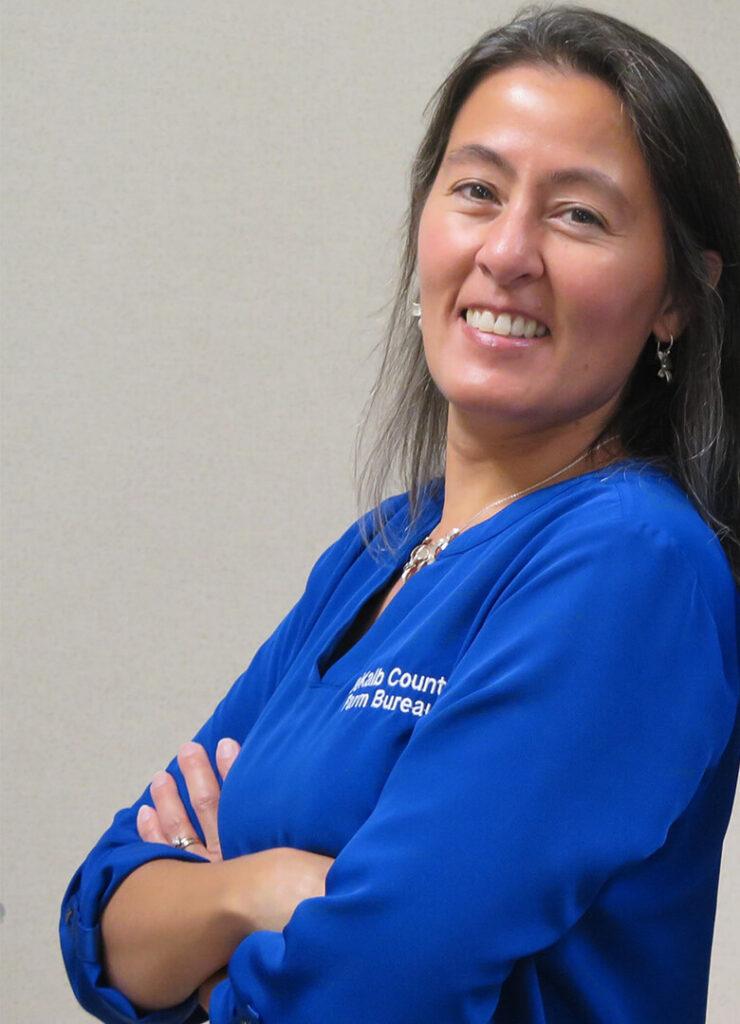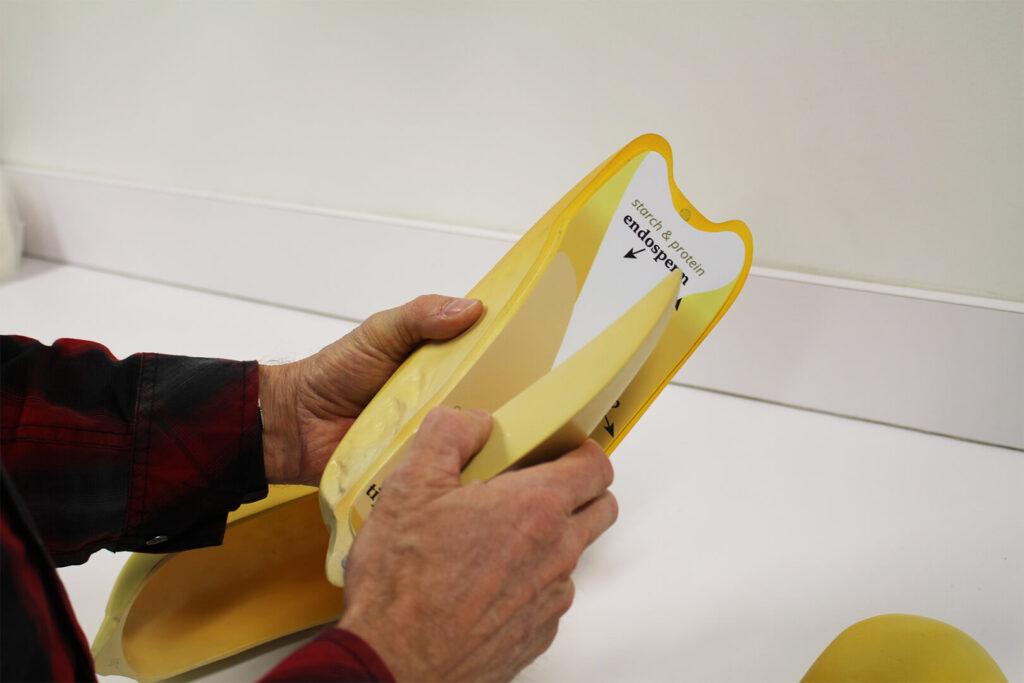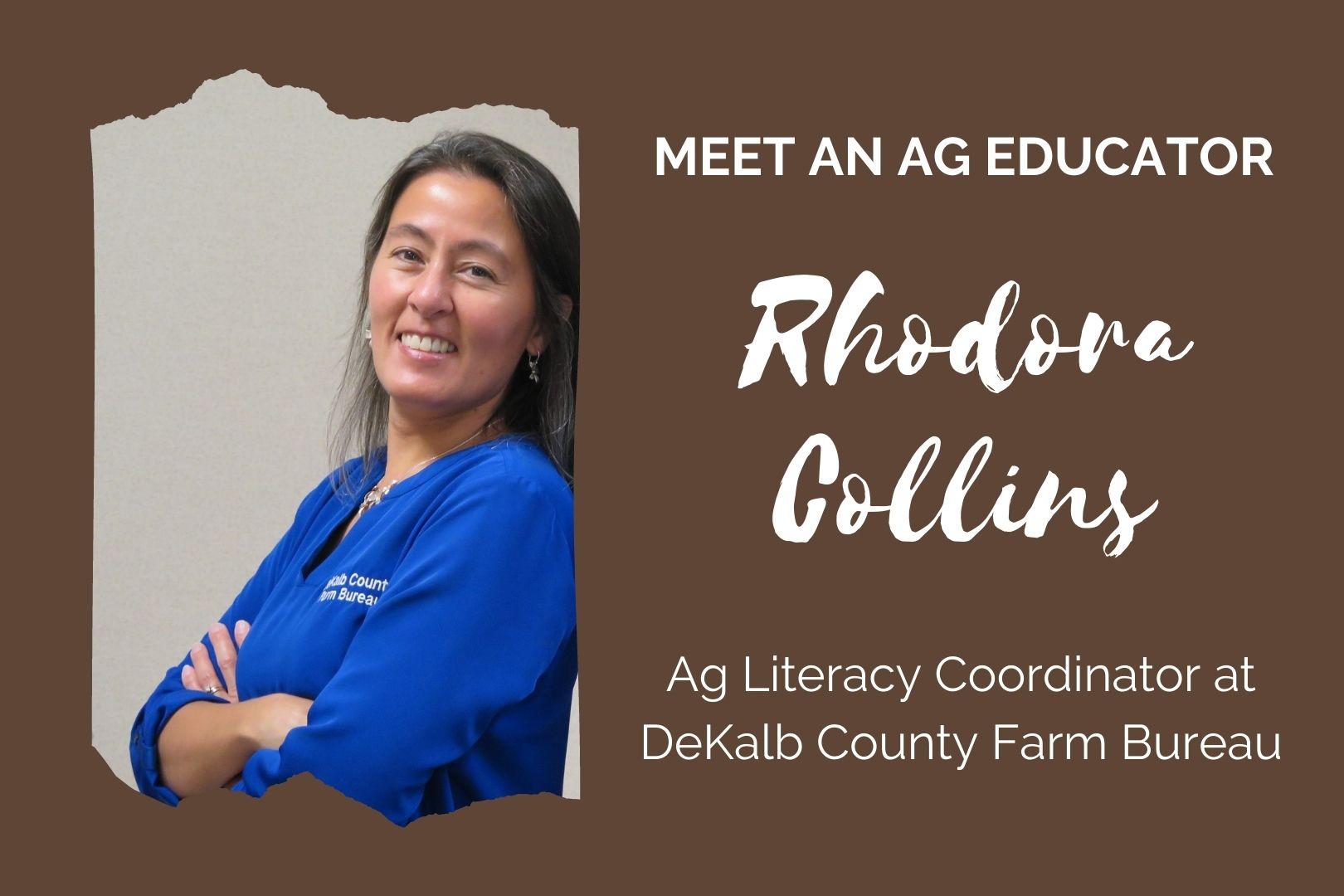
What comes to mind when you hear the words “farm bureau”? If consumers have ever heard them, they probably think of Farm Bureau Insurance. For us, it reminds us of all the hard work farm bureaus do to promote and increase agricultural literacy. After all, we’ve worked with a lot of people at farm bureaus who do just that.
One of those people is Rhodora Collins, who works for a county farm bureau in Illinois. We recently created a pull-apart model of a corn kernel to enhance her team’s classroom presentations, and we also got to talk with her about her work. Keep reading to hear about how she found the perfect niche in ag education and why she loves the subject!
Exhibit Farm: Could you tell us a little bit about your role with DeKalb County Farm Bureau (DCFB)?
Rhodora Collins: Sure! I am the agricultural literacy coordinator, so I’m in charge of our educational programs for preschool through high school. I spend most of the time creating programs for elementary and middle school.
EF: How did you first get involved in ag education?
RC: That’s a great story. I did not grow up on a farm, but I didn’t grow up in a city either. I grew up around agriculture, but my own parents didn’t farm. As an adult, I studied elementary education and I got a teaching certificate, but I found out non-formal education suited me better. I love working with teachers, I love working with students, but I also like that I don’t have thirty kids facing me every morning.
I started off in an extension doing natural resources education, and then the opportunity at Farm Bureau opened up. It was very similar work in creating programs for students and teachers focusing on agriculture. Like I said, I grew up around agriculture but not on a farm, and it’s fun to bridge those two areas.
EF: I was impressed to see that DCFB built a whole website just for its agricultural literacy resources. Could you talk a little bit about why promoting ag literacy is such a high priority for you?

RC: Part of our mission is to serve agriculture and farmers, but our county farm bureau message is also “Farm, Family, and Community”. Farming and agriculture is a part of the community, but because agriculture in our country is so efficient and there are so few farmers and ranchers, most of us don’t have to give much thought to where our food and clothing comes from. And yet, you know, isn’t it a part of becoming a citizen, becoming a consumer, becoming just a member of society to understand the very basic things that keep us alive and well?
And whether the teachers and students realize it or not, the things you study in school, whether you’re studying plants or animals or the environment, that’s all caught up in agriculture. So it all fits together.
EF: So what do you personally love most about being involved in ag education?
RC: I am never running out of things to learn. There’s always something super cool and new to learn about! I’ve been at Farm Bureau twenty-three years next week, and there’s always something new to learn just about corn.
I do a graduate course for teachers where I take them to farms and agribusinesses, and I always visit those farms and businesses ahead of time. And I love that, I love asking questions and I love finding out “What is it you do and why do you do it?” “Oh, this is how that relates to my life; I had no idea”. And then to turn around and share that excitement and new information with teachers and students, is — it just never gets old.
EF: So is the kernel we made for you meant for the teacher education program, or is it more for elementary school classroom visits?

RC: All of the above. If anything, I wish we had twenty of them. Our third-grade Ag in the Classroom program is called “It’s an Earful,” and for one of our activities, we dissect corn kernels. That’s kind of what gave us the idea of wanting a corn kernel you could take apart. In a perfect world, I’d have twenty of those, and the kids would dissect their kernel, and then the volunteer presenter would have the kernel model that you made to take apart and show the kids. The kids could look at their own kernel and go, “Oh, I get it; all right, this is the germ, this is the embryo”.
We do have a middle-school Science Olympiad coming up, and I know we’ll be using it for that. It’s going to be pretty limited [because of COVID]; the kids can’t be handling the kernel, mostly just going by and looking. But it’s a lot easier to go by and look at a giant corn kernel than a little bitty one.
I’m super excited to have not only the kernel but also the PanelPACK display that you produced for us. Just excited to have a couple more tools that are very visual and engaging to help talk about farming and agriculture and why it’s important to all of us.
EF: Well, that’s all our questions for you; is there anything else you’d like to add?
RC: Just that I enjoy working on ag literacy and I’m proud of the things we’re doing.
